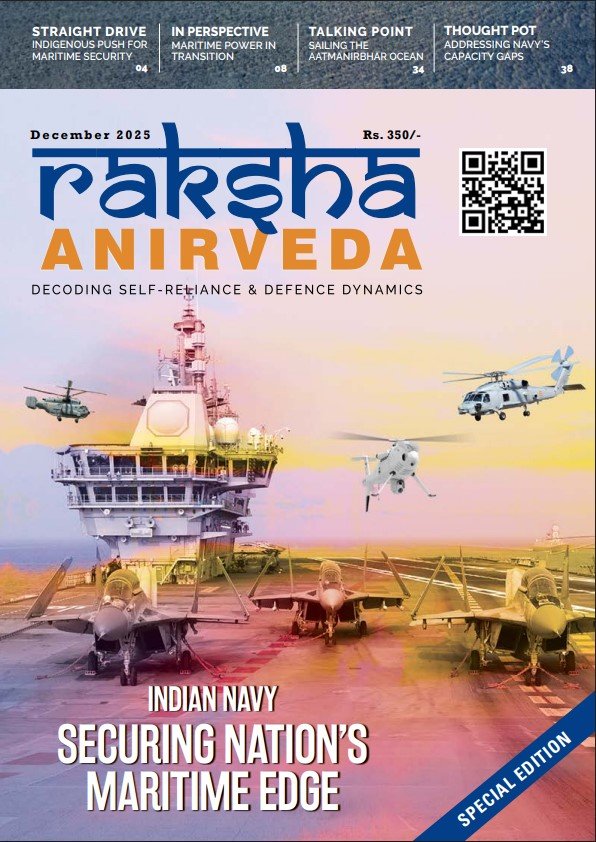Bengaluru: Chief of the Naval Staff Admiral Dinesh K Tripathi said there is significant increment in scale, synthesis and scope of capabilities in the maritime air domain, as he called on the domestic industry to work with the Navy to develop indigenised solutions.
He said Indian Navy is steadfastly committed to supporting the domestic industry and creating a conducive ecosystem for capability development. “There is significant increment in scale, synthesis and scope of capabilities in the maritime air domain, which is why I say that the industry is witnessing a catapult to billion opportunities,” Admiral Tripathi said.
Speaking at the seminar on Transition to Aatmanirbhar Indian Naval Aviation 2047 and its associated ecosystem organised at the Aero India here, he said, “To fully capitalise on the expansive opportunities, I would invite the domestic industry to work with us to invent, innovate, indigenize, and integrate solutions. For the Navy, industry is not about products but about partnerships, not about companies but about collaborations,” he said.
“Our engagement with the industry transcends mere capability acquisition. It is about working to secure a decisive war fighting advantage, and we aim to accomplish this indigenously, because Aatmanirbharta in defence sector today is a strategic necessity for us. Recent conflicts are testimony to the need for a robust domestic defence industry,” the Navy chief said, adding the domestic sector stands at a pivotal moment of opportunity driven by government’s clear vision, Ministry of Defence’s enabling policy frameworks and a clear roadmap which the Navy has.
“Our indigenous defence production has crossed Rs 1.25 lakh crores, with 20 per cent coming from the private sector. Defence exports have hit Rs 21,000 crore, with 60 per cent contributed by the private sector. By 2029 the government aims for a Rs 3 lakh crore indigenous production and Rs 50,000 crore of exports. These are significant opportunities for the domestic defence industry, as we march towards Aatmanirbharta,” he added.
Admiral Tripathi suggested a few ‘mantras’ for the domestic industry to consider for its approach. The first thing he wanted industry to consider is the uniqueness of the naval air domain and the need to tailor capabilities to the demanding environment at sea. Secondly, the rapidly transforming tech space and the imperative to reduce timeframes for design, development, deployment, derivatives and disposal, he said. Lastly, he spoke on the importance of comprehensively integrating each capability into the broader war fighting ecosystem.
Stating that naval aviation is poised for a transformative leap, the Navy Chief said, the air domain at sea is witnessing capabilities unthinkable from even a decade back. From an exclusive domain of manned aircraft, it is now a multi-dimensional battle space across kinetic and non-kinetic capabilities. Unmanned and autonomous systems are operating from the sea level till the stratosphere, he said. Noting that we are witnessing an unprecedented democratisation of the air domain, Admiral Tripathi said in the past credible naval aviation capabilities required immense industrial capacity, deep tactical expertise, and years of investment.
“Today that barrier has eroded. Commercially available systems outfitted with off-the-shelf sensors and connected to a commercial satellite network, now allow even non state actors to deploy capable aerial platforms at sea. We have been witnessing this for the past at least three or four years,” he said. Coupled with the fact that the software is constantly upgrading, what some hardware can do, innovation is occurring at the speed of thought, he further said.
Finally there is unprecedented expansion in the cavers of capabilities at sea, Tripathi said. Beyond traditional ISR (intelligence, surveillance, and reconnaissance) and precision strikes, aerial platforms are acting as communication relays , unmanned refueling tankers , jamming platforms, tethered aerostats, amongst others, he added.





